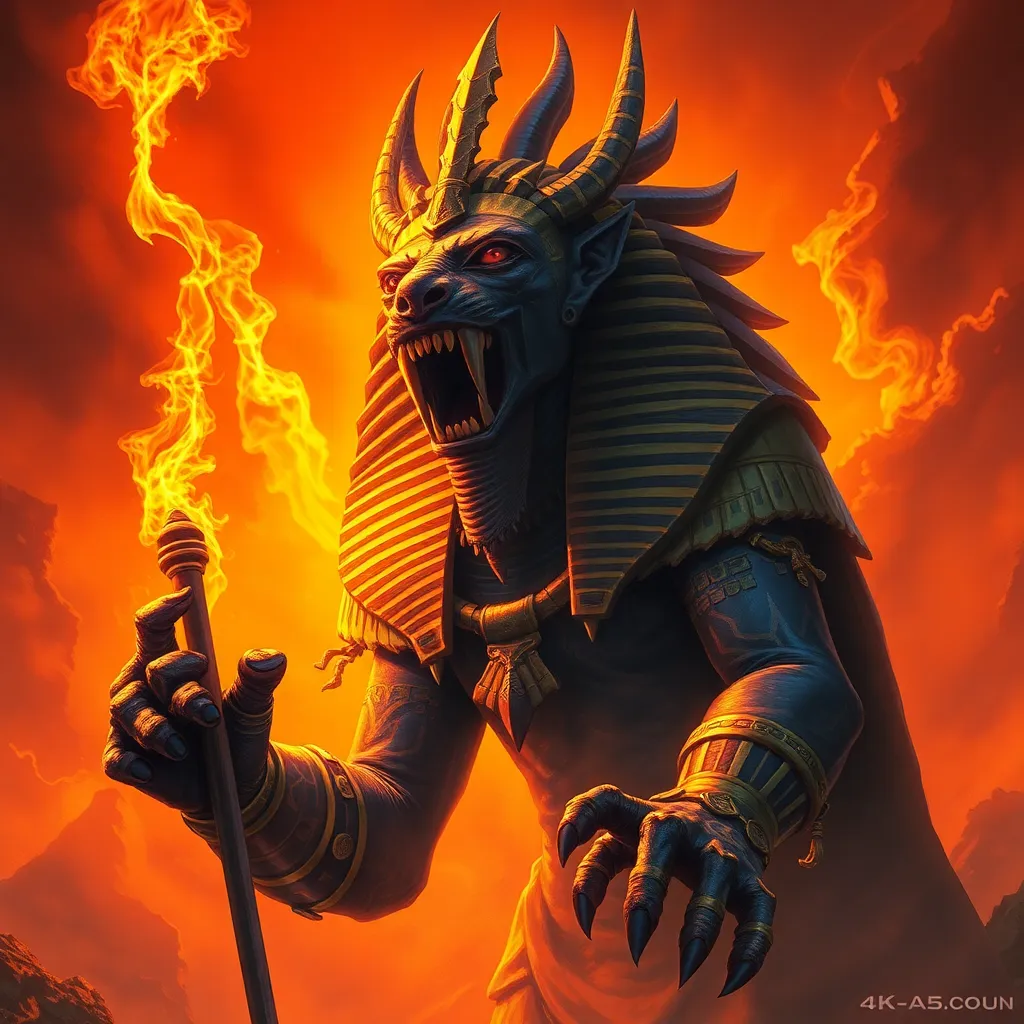Ammit the Devourer: The Fearsome Fate of the Unworthy
I. Introduction
In ancient Egyptian mythology, Ammit, often referred to as “The Devourer,” occupies a significant and fearsome role in the realm of the afterlife. She is a creature that represents the dire consequences of a life poorly lived, serving as a symbol of judgment and the severe repercussions that await the unworthy. This article aims to explore Ammit’s role within Egyptian mythology, her characteristics, and the implications of her judgment for souls deemed unworthy.
II. The Mythological Origins of Ammit
Ammit is typically depicted as a composite creature, combining the physical traits of three fearsome animals: the head of a crocodile, the body of a lion, and the hindquarters of a hippopotamus. This terrifying combination symbolizes her role as a predator of souls.
Her origins are deeply intertwined with the Egyptian pantheon, particularly with Osiris, the god of the afterlife, and Ma’at, the goddess of truth and justice. As part of the judgment process in the afterlife, Ammit is tasked with devouring the hearts of those who fail to meet the standards set by Ma’at.
Historically, Ammit was not worshiped in the traditional sense, as gods were, but rather she was revered as a necessary force of cosmic justice. She was often depicted in tombs and funerary texts as a reminder of the importance of living a virtuous life.
III. The Weighing of the Heart Ceremony
One of the most critical aspects of Ammit’s mythology is her involvement in the Weighing of the Heart ceremony, which takes place in the Hall of Ma’at. This ceremony is a pivotal moment for the deceased as it determines their fate in the afterlife.
- Judgment Process: In this sacred hall, the heart of the deceased is weighed against the feather of Ma’at, symbolizing truth and justice.
- Role of Anubis: Anubis, the god of mummification and the afterlife, presides over the weighing. He is responsible for guiding souls and ensuring the process is conducted fairly.
- Consequences: If the heart is found to be heavier than the feather, it signifies a life filled with sin and unworthy actions, leading to the ultimate consequence: being devoured by Ammit.
IV. The Role of Ammit as Devourer
Ammit’s primary function in the afterlife is to consume the hearts of those who are deemed unworthy. This act of devouring is both literal and symbolic, representing the finality of judgment.
The symbolic meaning of Ammit’s devouring is profound; it signifies not only the end of existence for the soul but also serves as a stark warning for the living. The fate of souls consumed by Ammit is eternal oblivion, a state of non-existence that reflects the ultimate consequence of failing to live a life in accordance with Ma’at’s principles.
V. Cultural Interpretations of Worthiness and Sin
In ancient Egyptian society, morality and justice were of utmost importance. The concept of Ma’at encompassed truth, balance, and cosmic order, and living in accordance with these principles was essential for a favorable afterlife.
Ammit’s role as a devourer can be compared to other mythological figures of judgment in various cultures, such as:
- Greek Mythology: The figure of Charon, who ferries the dead across the River Styx, emphasizing the importance of proper burial rites.
- Christianity: The concept of Hell and judgment by God, where the sinful face eternal damnation.
The societal implications of being deemed “unworthy” were significant in ancient Egypt, as individuals were constantly reminded of the need to act justly and honorably to avoid the fearsome fate that awaited them in the afterlife.
VI. Ammit in Popular Culture
In modern media, Ammit has found her way into various forms of entertainment, including films, literature, and video games. Her portrayal often emphasizes her fearsome nature, but interpretations can vary widely.
- Films: Ammit has appeared in animated features and horror films, often depicted as a monstrous figure representing the consequences of moral failure.
- Literature: Contemporary novels may explore themes of judgment and morality through characters inspired by Ammit’s mythology.
- Video Games: In many video games, she is often featured as a villain or a powerful force that players must contend with, symbolizing the struggle against one’s own sins.
The portrayals of Ammit in popular culture often differ from traditional mythology, focusing more on her monstrous aspects rather than the deeper moral lessons her story conveys. These adaptations can impact contemporary discussions about morality, justice, and accountability.
VII. Lessons from Ammit’s Myth
The myth of Ammit offers profound reflections on justice and accountability. She serves as a reminder that our actions have consequences, and that ethical living is crucial in the face of judgment.
Furthermore, the story of Ammit resonates in today’s society, urging individuals to reflect on their values and the concept of worthiness. The fear of being judged and found wanting is a universal theme that transcends cultures and eras.
VIII. Conclusion
Ammit holds a significant place in ancient Egyptian mythology as a symbol of judgment, consequence, and the importance of ethical living. Her fearsome role as the Devourer underscores the notion that one’s worthiness is determined by their actions and choices in life.
As we reflect on the enduring legacy of Ammit, we are encouraged to consider our own values and the impact of our decisions. The myth of Ammit serves as a powerful reminder that we must strive to live justly and honorably to avoid the fate of the unworthy.




